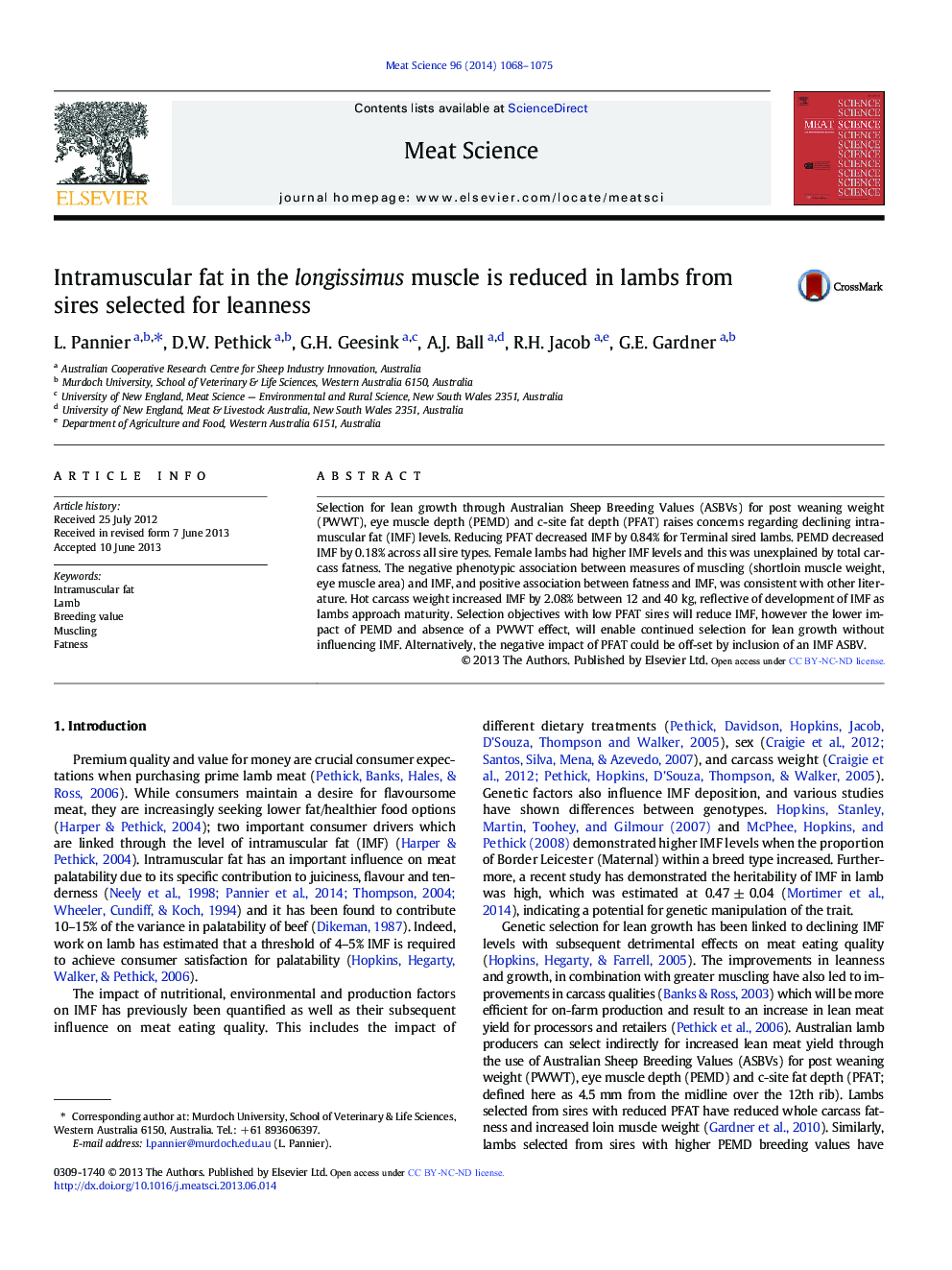| Article ID | Journal | Published Year | Pages | File Type |
|---|---|---|---|---|
| 5791555 | Meat Science | 2014 | 8 Pages |
â¢Lambs from Terminal sires with reduced PFAT have decreased IMF levels.â¢Lambs from high muscling sires (increased PEMD) have reduced IMF levels.â¢Growth rate is a driver of IMF, likely to be due to environmental effects.â¢Average IMF levels reach the Australian 4% threshold but should not drop further.â¢Inclusion of a breeding value for IMF in selection programmes will be beneficial.
Selection for lean growth through Australian Sheep Breeding Values (ASBVs) for post weaning weight (PWWT), eye muscle depth (PEMD) and c-site fat depth (PFAT) raises concerns regarding declining intramuscular fat (IMF) levels. Reducing PFAT decreased IMF by 0.84% for Terminal sired lambs. PEMD decreased IMF by 0.18% across all sire types. Female lambs had higher IMF levels and this was unexplained by total carcass fatness. The negative phenotypic association between measures of muscling (shortloin muscle weight, eye muscle area) and IMF, and positive association between fatness and IMF, was consistent with other literature. Hot carcass weight increased IMF by 2.08% between 12 and 40Â kg, reflective of development of IMF as lambs approach maturity. Selection objectives with low PFAT sires will reduce IMF, however the lower impact of PEMD and absence of a PWWT effect, will enable continued selection for lean growth without influencing IMF. Alternatively, the negative impact of PFAT could be off-set by inclusion of an IMF ASBV.
